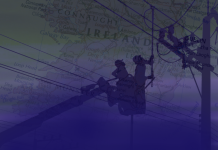
National Grid has mooted rolling together its fastest system balancing programmes into a single pre-fault service. The system operator shared its thinking on simplification of balancing services at the Storage Working Group meeting on Monday.
End-users and demand-response providers have urged Grid to simplify the market in order to make it easier for them to participate. For its part, National Grid requires a greater volume of system balancing from demand-side parties as renewable generation pushes thermal plant off the system, reducing inertia.
The Firm Frequency Response (FFR) and Enhanced Frequency Response (EFR) mechanisms pay generators and demand-side providers, usually but not exclusively via aggregators, to quickly adjust load or provide power to help balance the system when it deviates from set trigger points around 50Hz. This usually happens when a generator or interconnector drops out. They pay the highest rates of all National Grid’s balancing services available to the demand-side.
FFR providers have to respond to a frequency event within 10 seconds. There are two forms of FFR – static and dynamic. The former requires providers to reduce consumption while the latter requires flexibility in both directions.
Enhanced Frequency Response is the fastest dynamic frequency response service. Providers have to deliver in under a second. The first four-year EFR contracts were issued in August this year, the vast majority to be delivered via battery assets. Providers have to sustain delivery for a minimum of 15 minutes in either direction. It is the highest value frequency response service.
While National Grid has stressed that it has not yet decided when or if it will combine all frequency response mechanisms into a single service, market participants believe that represents a sensible approach.
“Any simplification of services is a positive move and Grid’s indication that it may move to a more dynamic market with some ‘pay for performance’ parameters is great news for new technologies and ultimately consumers,” said Chris Kimmet, commercial director at aggregator Open Energi.
Alastair Martin, co-founder and head of strategy at Flexitricity said it was a “perfectly logical thing to do”. However, he said, “it’s not the end of the story”.
“EFR is basically fast FFR that contains some concessions for batteries. National Grid needs fast response, so it makes sense to roll the bulk of that into the FFR tender,” said Martin.
“However, neither [of those services] address the growing inertia problem in the system, so you will see services which respond not just to frequency, but to the rate of change of frequency, which is the signal that shows you that inertia is failing to keep up with events.
“Basically, frequency moves fast and the lighter the system, the faster it moves. EFR is a partial response to that – it responds more quickly than FFR. But the end game is to respond directly to the speed of movement of frequency rather than waiting for it to get to a particular level [the 50Hz deviation trigger point].”
Martin believes that will ultimately require a RoCoF-based frequency response service. That is, Rate of Change of Frequency – and the firm is involved in a project with National Grid, called Enhanced Frequency Control Capability to work out how to get there.
Also involved in the project are Centrica, which brings a large scale CCGT into the trial; GE Grid Solutions, contributing control systems; and the Universities of Manchester and Strathclyde, which are involved in “technical puzzle solving”, according to Martin. Solar and battery developer Belectric is also on the team, as is a wind farm operator.
Much of the trial revolves around understanding regional variances in system inertia, and how a loss of input (a power station or interconnector) in one location affects other locations.
“When the France interconnector goes down, it gives the system a kick, the disturbance propagates through the GB system and the [required] response varies by location,” explains Martin. “If Torness tripped (EDF’s 1.3GW nuclear station in East Lothian), that would give the system a kick in a different location [and create different knock-on effects in other regions].”
The team is trying to work out how these disturbances affect each other and develop systems that can determine which resources to deploy based on a better understanding of the effect on regional inertia.
While some industrial companies have signed up to the trial “and hopefully a water company, some cold storage and CHP as well,” Martin says more participants are welcome, particularly those already providing frequency response, as this service, while similar in terms of speed of response, is based on the speed of the change in frequency, rather than the magnitude of that change.
“We are trialling different options for industrial and commercial customers to provide RoCoF. We are looking for diversity of geographic location and diversity in the type of response they can provide,” he said.
See more details of the project here.
Related stories:
Free report: DSR and battery storage
Nissan and Eaton to rollout commercial scale battery storage in 2017
Who needs an EFR contract? Somerset solar site installs grid scale Tesla battery
Battery storage: Positive outlook or does a correction loom?
National Grid says impact of solar requires greater system flexibility
National Grid signs 20MW demand-side response contract with battery storage operator
National Grid says UK will miss 2020 targets, predicts big battery future
Tesla: People don’t engage with energy bills, but they will have to
National Grid must provide a plan for battery market, says SmartestEnergy
Ofgem: Energy flexibility will become more valuable than energy efficiency
Nissan ramps up battery storage plans
Can National Grid hit its 2020 DSR target?
Limejump boss: Big six will have to acquire aggregators or lose relevence
Infrastructure chief: UK could be energy storage world leader if government acts now
National Grid boss: future of energy is demand not supply
Government backs Adonis’ smartgrid plan, pledges £50m+ for storage and demand response
National Grid says impact of solar requires greater system flexibility
Eon opens 2MW battery storage facility
Smart grids ‘require local control and businesses must play or pay’
Follow us at @EnergystMedia. For regular bulletins, sign up for the free newsletter.



